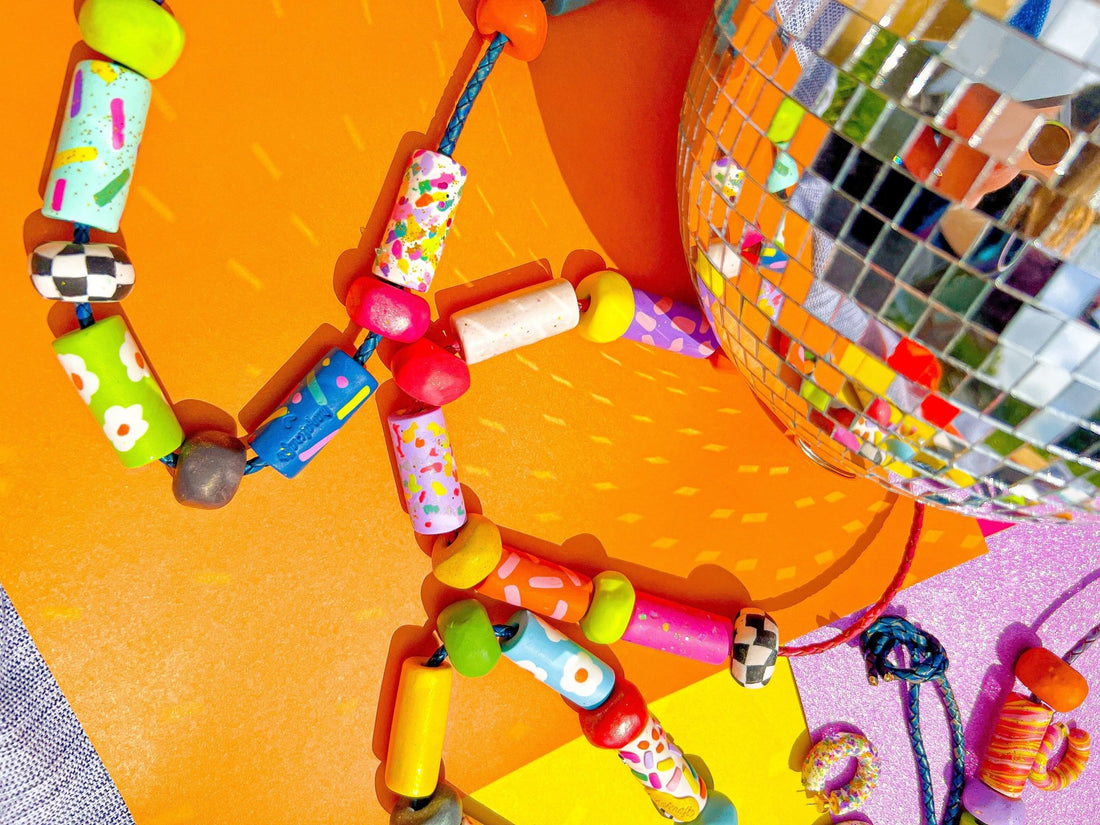
Tips and Tricks for Beginners: Essential tools to have for creating your very first polymer clay jewelry
Share
Creating jewelry with polymer clay offers endless opportunities for experimentation, allowing you to learn something new every day as your skills develop. For this creative journey, I've gathered a few tips and tools from my research and experiences that I believe will be incredibly useful for anyone working with polymer clay or wanting to start.
If I wanted to make polymer clay jewelry today, what knowledge would save me time and add professionalism to my work from the very beginning? Here are the answers:
Acrylic rolling pin
Using any rolling pin for polymer clay is unfortunately not possible because the clay sticks to the board. While I've heard that silicone rolling pins work well, I went straight for the Sculpey acrylic rolling pin, which made the jewelry-making process much easier. After experiencing this fun journey once, I could never go without an acrylic rolling pin!
Oven thermometer
As someone who burned their first polymer clay creations, I learned that the oven temperature was not as I set it, only after getting an oven thermometer. Many ovens have temperature fluctuations, and I saw that the temperature I set to 110 degrees actually reached 150 degrees with the thermometer. To prevent your pieces from burning and becoming brittle, an oven thermometer will be a lifesaver. I highly suggest having a separate mini oven for polymer clay for your health, as well as ventilate the area after baking.
Crafting tool
I bought the Dremel Stylo+ and it turned out to be one of my best investments. It makes the sanding, polishing, and drilling process after the clay comes out of the oven much easier, allowing me to achieve quality and professional results. Please wear a mask while using a Dremel or sandpaper to avoid inhaling polymer particles while sanding or drilling. Once you finish, vacuum the entire area and use wet wipes to completely clean up the clay dust. This is crucial for your health.
Pasta machine
Manual pasta machines are available on the market, you can get one from Amazon. I didn't need this tool while making hoop earrings, however it became incredibly useful when I started making dangle earrings. It ensures a smooth and even base for the earrings, making it a very practical tool for those who don't want to waste time rolling out the clay with a rolling pin. It is also extremely useful for the conditioning phase of the clay.
Baby oil
To soften old clay, take a very small amount into your palm, moisturize your hand, and then play with the clay. Even the most crumbly old clay will reach the right consistency if you work it enough. The key here is not to overdo the oil. Alternatively, you can use Fimo Liquid Clay or a bit of Sculpey Bake and Bond, it will also help.
Wet wipes for the raw clay & acetone for the baked clay
These are perfect for smoothing the clay surface before baking. Gently wipe the area you want to smooth with a wet wipe using your fingertip; the results are impressive. If the product is already baked, you can remove any imperfections and bubbles with acetone.
Clay cutters
Especially for those who want to work on dangling models, there are many types of ready to use polymer clay cutters online. Using them helps a lot during my production process. You can also contact businesses that do 3D printing to have molds made in the shape and size you want.
Liquid clay or 'gel' adhesive
I've gone through a trial-and-error process when attaching earring posts to polymer clay. All jewelry artists want their products to be as durable and high-quality as possible, ensuring the customer is satisfied. You can find liquid clay from Fimo or Sculpey available on the market. First, I make a hole in the back of the product with my Dremel Stylo, put the posts in and the adhesive on top of them, and bake it again using these adhesives. This is one of the best ways to attach the post to the clay. If you don't want to bake it twice, you can also use extra strong gel adhesives available on the market. Polymer clay is a flexible material, even after baked. Gel adhesives provide some flexibility by solidifying between the post and the polymer clay, ensuring maximum strength at the connection point between the product and the post.
These are some of the essential tips and tricks for your polymer clay jewelry-making that will allow you to save time while adding a touch of professionalism to your creations. Happy crafting :)


